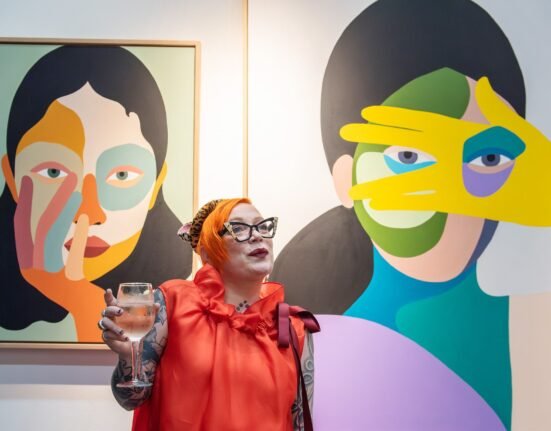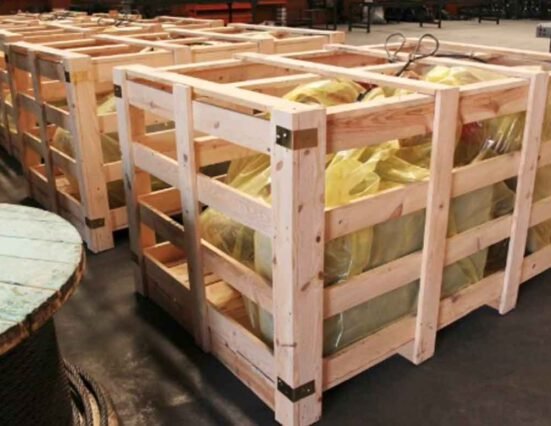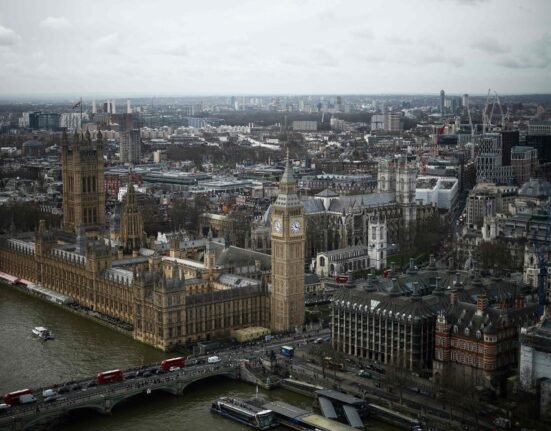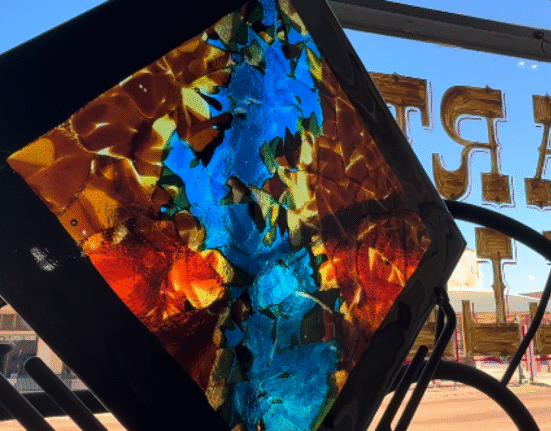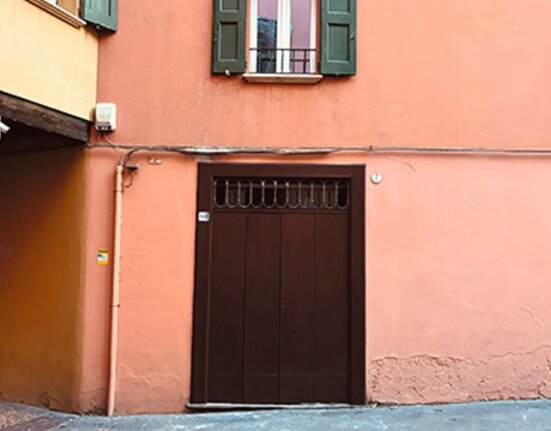The Contemporary Art Modern Project Gallery’s (CAMP Gallery) latest exhibition, “Asking for a Friend” coincides with Bernice Steinbaum Gallery’s, “Shelly McCoy’s First of Many Future Retrospectives.”
Serendipity prompts contemplation in the ways in which they overlap with one another. Both exhibitions feature fiber art. Both endorse female artists past the age of 50 — a dynamic, powerful, and underrepresented group that past and present art ecosystems have minimized throughout the world. Finally, both have direct ties to one another, to the early aughts of my own art career, and to the greater fiber art community in South Florida.
It was not long ago that, before venturing on my own into the local art scene in Miami, my entire curatorial and writing work was centered around CAMP Gallery, working as one of the gallery’s staff, and curating exhibitions with mostly local artists, thanks to the trust and support of its director, Melanie Prapopoulos. I also received my first “independent” writing opportunity covering Shelly McCoy’s work, in anticipation of her first solo with Bernice Steinbaum in 2023.
“Asking For a Friend,” which opened Friday, March 7 and continues through Saturday, April 5, includes works by Lydia Viscardi, Heidi Hankaniemi, Joan Wheeler, and Silvana Soriano.

Photo courtesy of The CAMP Gallery
Soriano in particular is a figure from my time at The CAMP Gallery, as the first artist I ever interviewed in the early aughts of CAMP Gallery’s Instagram live talks, and one of the heavy hitters in CAMP’s yearly fiber art group exhibition, “Women Pulling at the Thread of Social Discourse.” Her mixed media painting and collage work have a soft peacefulness to them, with the characters always poised in these elegant mise en scenes that feel poetic and warm.
The larger works featured in the exhibition are inspired by the novels of famed Ukrainian-Brazilian writer Clarice Lispector. They have a verve, an organic volume, and physicality that makes them feel so much more real than their predecessors, since Soriano has worked in this medium for several years as her own practice has evolved. What’s more, they noticeably have very organic, very real figurations of their subjects’ breasts, noteworthy because they are not represented in a sexual context, as is so often front and center through popular media.
Viscardi takes up the leftmost wall, with mixed media textile appliques and paint over vintage framed prints of different animals, like frogs (“Eastern Spadefoot Falling Back,” 2023) or turtles (“Bog Turtles are Cool,” 2023), each representing a different season. “Museum of Seasons” (2022) hangs in the center of the wall and is a large, circular, mixed-media piece that integrates embroidery, found fabrics, sequins, and paint on canvas.
READ MORE: Miami art exhibit tells story of how Black hair business was ‘act of resistance’ in South Florida
The work is reminiscent of seasonal calendar paintings from the Middle Ages, which often hope to emulate the change of seasons throughout the circles with natural motifs. Hankaniemi’s abstract works offer a more muted approach to fiber work. Her use of color feels intuitive, reserved, and eloquent. Each embroidered part is arranged neatly into key sections of each piece to give the effect of a blossoming flower, which is further complemented by the texture of the doilies and the uniform beige that surrounds a central burst of color.
One standout work is “The Hug” (2025), where Hankaniemi has constructed a pair of rounded arms in the shape of a hug. The piece hangs from a hook overhead, allowing viewers to duck into the sculpture and be in the midst of a hug.
Joan Wheeler’s work incorporates quilts, paintings, and even crochet to make wearable sculpture work. These “Chore Coats” (2025), are commentaries towards feminine domesticity, though seemingly as a recognition of hard work done by women over generations, be it by choice or by default of the roles forced upon them. These artists are relatively new to CAMP Gallery’s community of artists, yet they are CAMP through and through; female artists all over 50, working in fiber, with bold and bright color sensibilities. With a long history of exhibiting female artists in a plethora of mediums and from all walks of life, CAMP Gallery has proven once again that art spaces can shine by supporting women past society’s premature conceptions of a “prime.”
This exhibition, which is thoughtfully curated by CAMP Gallery’s Maria Gabriela Di Giammarco, explores the metaphor of advice columns, and the ideas of community, interdependence, and support derived from them. As such, the exhibition includes a quiet corner for viewers to write down their questions to the artist, which will be then shared with the artists throughout the exhibition’s programming. Viewers are therefore encouraged to leave questions in hopes that everyone can gain some nuggets of wisdom.
McCoy is another longtime participant in “Women Pulling at the Threads of Social Discourse,” and the first artist whose work I ever curated in a museum — MoCA Westport’s exhibition with CAMP Gallery in 2022. Her “First of Many Future Retrospectives” opened Saturday, March 22, runs through Monday, April 21 (although it may be extended) at Bernice Steinbaum Gallery, and features work from the last 5 years.
Her most recent works are made through several cut-up pieces of fabric, which are then attached by ironing the pieces onto a base fabric with a heat-activated adhesive. The resulting works look like paintings, and from a distance are photorealistic, even though they are made almost entirely of fabric scraps and secondhand clothing. These works are a slight departure from much of her prior works, which had a much more direct political aim,
An example of the earlier work in this exhibition is “Coup” (2021), which was also shown at CAMP Gallery and at MoCA Westport. It is an arrangement of red, white and blue crayons spelling out the word COUP and backed by an American flag. It’s like a political punch in the face, which these fiber paintings are not. Nevertheless, some hints of her radical political work still lie under the surface.
In the fiber painting “Mary’s Last Dance” (2023), McCoy portrays a half-done drag queen covering their nether regions like Marylin Monroe in “The Seven Year Itch.” Drag as an artistic medium is in its latest zeitgeist thanks to “RuPaul’s Drag Race” and the smorgasbord of television shows, movies, YouTube channels, and podcasts that have launched from it. The drag queen featured here, however, exists in a context both removed from this zeitgeist and preceding its ascension — drag simply as a way of entertaining others, playfully “getting in the moment,” as is apparent in this portrait. The work is tongue-in-cheek, as is much of the humor around drag and McCoy’s work in general. It also represents a topic that has undue discourse in American politics today, as drag performers face added scrutiny from conservative voices for their alleged corruption and grooming of children merely by entertaining the public in a transgressive fashion.

Photo courtesy of Bernice Steinbaum Gallery
Take “Every Garden Can be the Garden of Eden (Even for a Frolicking Dog)” (2024) as another example of a quieter political statement. The work looks like a nondescript architectural piece depicting a Coconut Grove home with a central outdoor terrace, bright fauna sprouting from the ground all around pool, and large windows and doors surrounding the entire area and looking into the house itself. It is Bernice Steinbaum’s home, with her gallery taking up its right-most wing.
What viewers may miss from simply looking at this depiction of Steinbaum’s home is that McCoy is also rendering the venue where she and her partner, photographer Xonia Regalado, were married. On a hot April afternoon, several of McCoy’s close family and friends, me included, lined along the same gray tiled walkway depicted in this fiber painting.
McCoy sauntered down a makeshift aisle in a red and black pantsuit, rainbow colored jewelry, and a white veil (in true Shelly McCoy fashion) to marry the woman she lived with for several decades and with whom she raised her child. Steinbaum’s eclectic midcentury home is inherently political, as are Steinbaum’s legacy and the celebration of McCoy and Regalado’s love, all of which are somehow imbued into this fiber painting.
Perhaps this is merely a way of trying to rectify the Shelly McCoy of 2025 with the Shelly McCoy of 2022, but it feels like her messaging and her humor, while not so in your face as in the past, still lie just beneath the surface.
WHAT: “Asking for a Friend” at The Contemporary Art Modern Project (CAMP) Gallery and “First of Many Future Retrospectives” at Bernice Steinbaum Gallery
WHERE: The Contemporary Art Modern Project Gallery, 791 NE 125th St., North Miami; Bernice Steinbaum Gallery, 2101 Tigertail Ave., Coconut Grove
WHEN: The Contemporary Art Modern Project Gallery hours are noon to 5 p.m., Tuesday to Saturday. Closing talk and event, 2 to 4 p.m., Saturday, April 5; Bernice Steinbaum Gallery hours are 10 a.m. to 5 p.m., Monday, Wednesday and Friday.
ArtburstMiami.com is a nonprofit news partner of WLRN, providing news on theater, dance, visual arts, music and the performing arts.



